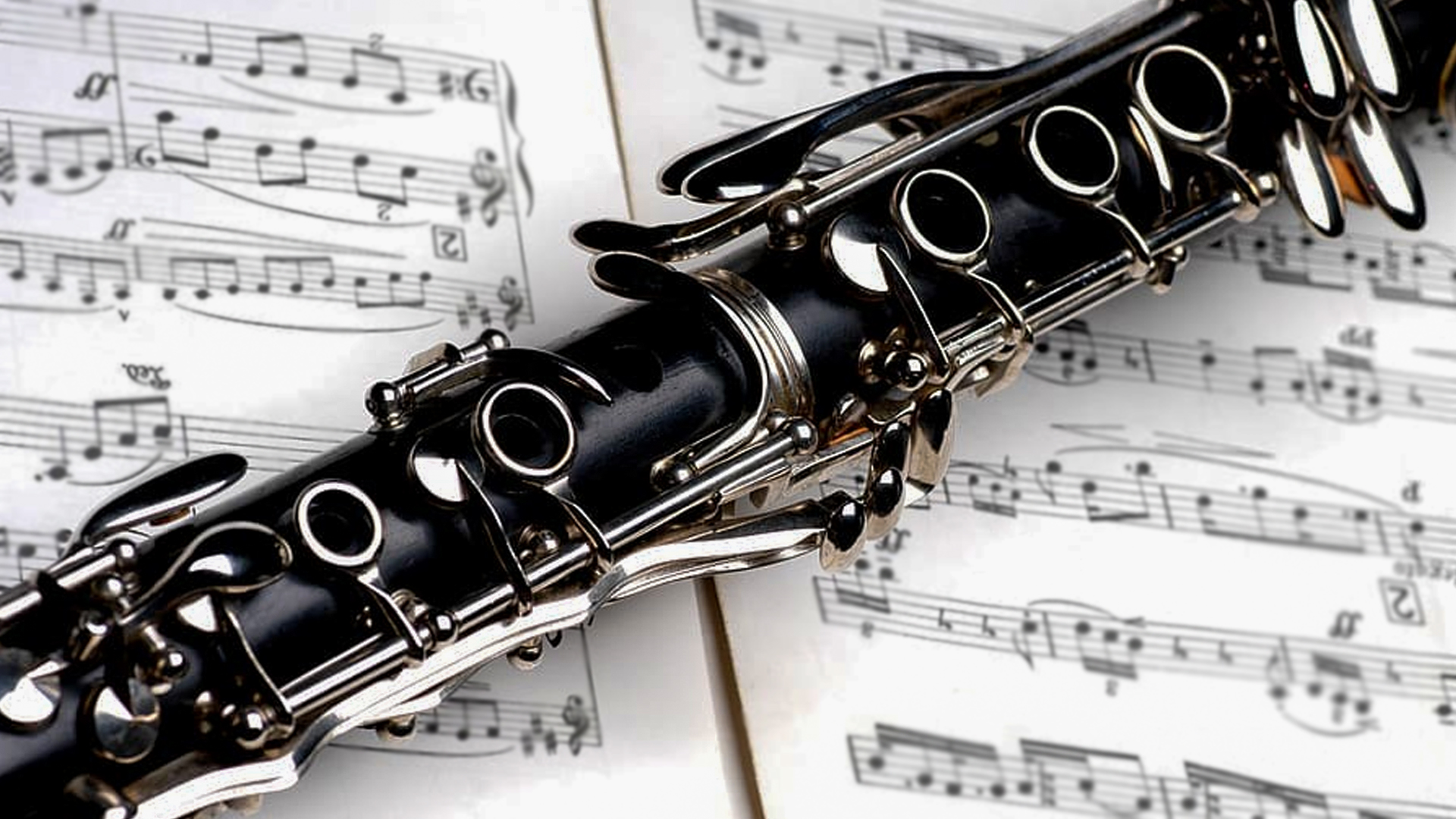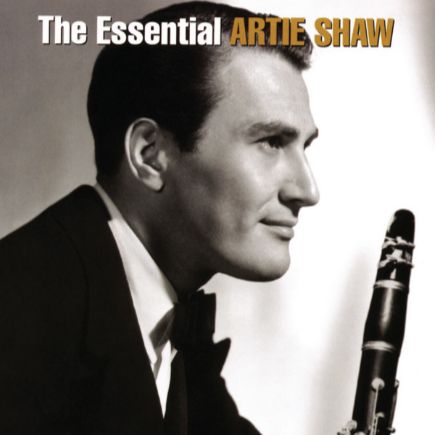Artie Shaw, clarinettiste d’exception et iconoclaste du swing
Clarinettiste, saxophoniste, compositeur, arrangeur et chef d’orchestre, Arthur Jacob Arshawsky – connu sous le nom d’Artie Shaw – incarne l’une des figures les plus brillantes et les plus complexes de l’ère du swing. À quinze ans, il est engagé comme saxophoniste dans le big band de Johnny Cavallaro, où il apprend la clarinette et façonne déjà un son d’une grande pureté. Très tôt, il comprend que cet instrument peut rivaliser avec la virtuosité des meilleurs solistes de l’époque.
En s’immergeant dans la vie nocturne de Harlem, il fréquente l’un des clubs de jazz les plus influents, Pods and Jerry’s, où il rencontre Willie « The Lion » Smith, qui l’engage et l’initie à une pratique du jazz à la fois libre et exigeante. En 1932, il devient pendant un an premier saxophoniste de l’orchestre du Columbia Broadcasting System, sous la direction de Freddy Rich, acquérant une expérience précieuse dans un contexte radiophonique très professionnel. Pourtant, en 1933, lassé du monde musical, il se retire pour se consacrer à la littérature, passion qui l’accompagnera toute sa vie. Des difficultés financières le ramènent cependant sur scène un peu plus de deux ans plus tard.
La carrière d’Artie Shaw bascule véritablement avec l’enregistrement de Begin the Beguine. Le succès est colossal et le propulse au rang de star nationale. Profitant de cette notoriété, il prend des décisions artistiques audacieuses : défiant les préjugés raciaux de son temps, il engage Billie Holiday dans son orchestre et enregistre avec elle Any Old Time, affirmant publiquement sa position contre la ségrégation. Cette prise de risque lui vaut autant l’admiration de nombreux musiciens que l’hostilité d’une partie du public et de plusieurs programmateurs.
À la fin des années 1930, une grave maladie l’éloigne temporairement des scènes jusqu’à l’été 1940. En 1942, après un passage dans l’armée pendant la Seconde Guerre mondiale où il dirige des orchestres de service, il revient à New York et forme un nouvel ensemble encore plus résolument tourné vers le jazz. Il y engage le trompettiste Roy Eldridge, le guitariste Barney Kessel et le saxophoniste ténor Herbie Steward, affirmant une esthétique plus moderne, portée par un swing nerveux et une écriture raffinée.
Artiste engagé, Artie Shaw milite ouvertement contre le racisme et la ségrégation, ce qui contribue à sa réputation d’homme de principes autant que de musicien exceptionnel. Parallèlement, la presse à scandale relaie largement sa vie privée tumultueuse : huit mariages et autant de divorces, notamment avec Lana Turner et Ava Gardner, nourrissent sa légende de séducteur insaisissable.
Artie Shaw, un clarinetista excepcional e iconoclasta del swing
Clarinettista, saxofonista, compositor, arreglista y director de orquesta, Arthur Jacob Arshawsky —conocido como Artie Shaw— encarna una de las figuras más brillantes y complejas de la era del swing. A los quince años es contratado como saxofonista en la big band de Johnny Cavallaro, donde aprende el clarinete y empieza a forjar un sonido de gran pureza. Muy pronto comprende que este instrumento puede rivalizar con la virtuosidad de los mejores solistas de su tiempo.
Sumergiéndose en la vida nocturna de Harlem, frecuenta uno de los clubes de jazz más influyentes, Pods and Jerry’s, donde conoce a Willie ‘The Lion’ Smith, quien lo contrata y lo introduce en una práctica del jazz a la vez libre y rigurosa. En 1932 se convierte durante un año en el primer saxofonista de la orquesta del Columbia Broadcasting System, dirigida por Freddy Rich, adquiriendo una experiencia valiosa en un contexto radiofónico altamente profesional. Sin embargo, en 1933, cansado del mundo musical, se retira para dedicarse a la literatura, una pasión que lo acompañará toda su vida. Las dificultades financieras lo devuelven a los escenarios poco más de dos años después.
La carrera de Artie Shaw cambia definitivamente con la grabación de Begin the Beguine. El éxito es colosal y lo proyecta al rango de estrella nacional. Aprovechando esta notoriedad, toma decisiones artísticas audaces: desafiando los prejuicios raciales de su época, contrata a Billie Holiday en su orquesta y graba con ella Any Old Time, afirmando públicamente su oposición a la segregación. Este gesto le vale la admiración de numerosos músicos, pero también la hostilidad de parte del público y de algunos programadores.
A finales de la década de 1930, una grave enfermedad lo aleja temporalmente de los escenarios hasta el verano de 1940. En 1942, tras servir en el ejército durante la Segunda Guerra Mundial —donde dirige orquestas militares— regresa a Nueva York y forma un nuevo conjunto aún más orientado hacia el jazz. Contrata al trompetista Roy Eldridge, al guitarrista Barney Kessel y al saxofonista tenor Herbie Steward, definiendo una estética más moderna, marcada por un swing incisivo y una escritura sofisticada.
Artista comprometido, Artie Shaw lucha abiertamente contra el racismo y la segregación, contribuyendo así a su reputación de hombre de principios tanto como de músico excepcional. Paralelamente, la prensa sensacionalista alimenta ampliamente su vida privada turbulenta: ocho matrimonios y otros tantos divorcios, en particular con Lana Turner y Ava Gardner, fortalecen su leyenda de seductor inasible.
Artie Shaw, clarinettista d’eccezione e iconoclasta dello swing
Clarinetista, sassofonista, compositore, arrangiatore e direttore d’orchestra, Arthur Jacob Arshawsky – conosciuto come Artie Shaw – incarna una delle figure più brillanti e complesse dell’era dello swing. A quindici anni viene ingaggiato come sassofonista nella big band di Johnny Cavallaro, dove apprende il clarinetto e sviluppa un suono di grande purezza. Ben presto comprende che questo strumento può competere con la virtuosità dei migliori solisti dell’epoca.
Immergendosi nella vita notturna di Harlem, frequenta uno dei club di jazz più influenti, Pods and Jerry’s, dove incontra Willie « The Lion » Smith, che lo ingaggia e lo introduce a una pratica del jazz insieme libera ed esigente. Nel 1932 diventa per un anno primo sassofonista dell’orchestra della Columbia Broadcasting System, diretta da Freddy Rich, acquisendo un’esperienza preziosa in un contesto radiofonico altamente professionale. Tuttavia, nel 1933, stanco dell’ambiente musicale, si ritira per dedicarsi alla letteratura, una passione che lo accompagnerà per tutta la vita. Difficoltà finanziarie lo riportano sulle scene poco più di due anni dopo.
La carriera di Artie Shaw cambia radicalmente con la registrazione di Begin the Beguine. Il successo è enorme e lo proietta allo status di star nazionale. Sfruttando questa notorietà, compie scelte artistiche audaci: sfidando i pregiudizi razziali del suo tempo, ingaggia Billie Holiday nella sua orchestra e registra con lei Any Old Time, affermando pubblicamente la sua posizione contro la segregazione. Questo gesto gli attira l’ammirazione di molti musicisti, ma anche l’ostilità di parte del pubblico e di alcuni programmatori.
Alla fine degli anni Trenta, una grave malattia lo costringe a un temporaneo ritiro dalle scene fino all’estate del 1940. Nel 1942, dopo il servizio militare durante la Seconda guerra mondiale —durante il quale dirige orchestre di servizio— torna a New York e forma un nuovo ensemble ancora più orientato verso il jazz. Vi ingaggia il trombettista Roy Eldridge, il chitarrista Barney Kessel e il sassofonista tenore Herbie Steward, delineando un’estetica più moderna, segnata da uno swing vibrante e da una scrittura raffinata.
Artista impegnato, Artie Shaw combatte apertamente contro il razzismo e la segregazione, contribuendo alla sua reputazione di uomo di principi oltre che di musicista eccezionale. Parallelamente, la stampa scandalistica amplifica la sua vita privata turbolenta: otto matrimoni e altrettanti divorzi, in particolare con Lana Turner e Ava Gardner, alimentano la sua leggenda di seduttore inafferrabile.
Artie Shaw, an exceptional and iconoclastic swing clarinetist
Clarinetist, saxophonist, composer, arranger, and bandleader, Arthur Jacob Arshawsky — known as Artie Shaw — stands as one of the most brilliant and complex figures of the swing era. At fifteen, he was hired as a saxophonist in Johnny Cavallaro’s big band, where he learned the clarinet and began shaping a tone of remarkable purity. Early on, he understood that this instrument could rival the virtuosity of the finest soloists of the time.
Immersing himself in Harlem’s nightlife, he frequented one of the neighborhood’s most influential jazz clubs, Pods and Jerry’s, where he met Willie « The Lion » Smith. Smith hired him and introduced him to a jazz practice that was both free and demanding. In 1932, Shaw spent a year as the lead saxophonist of the Columbia Broadcasting System orchestra under the direction of Freddy Rich, gaining invaluable experience in a highly professional radio environment. Yet in 1933, weary of the music world, he stepped away to devote himself to literature — a passion that would accompany him throughout his life. Financial difficulties, however, brought him back to the stage a little more than two years later.
Artie Shaw’s career pivoted decisively with the recording of Begin the Beguine. The success was colossal, propelling him to national stardom. Taking advantage of this visibility, he made bold artistic choices: challenging the racial prejudices of his time, he hired Billie Holiday for his orchestra and recorded Any Old Time with her, publicly affirming his stance against segregation. This courageous act earned him admiration from many musicians, while also provoking hostility from part of the audience and a number of concert programmers.
At the end of the 1930s, a serious illness kept him away from the stage until the summer of 1940. In 1942, after serving in the U.S. Navy during World War II — where he directed service bands — he returned to New York and formed a new ensemble even more strongly oriented toward jazz. For this group, he hired trumpeter Roy Eldridge, guitarist Barney Kessel and tenor saxophonist Herbie Steward, shaping a more modern aesthetic marked by tight swing and sophisticated writing.
A committed artist, Artie Shaw spoke out openly against racism and segregation, contributing to his reputation as a man of principle as well as an exceptional musician. At the same time, the tabloid press widely publicized his turbulent private life: eight marriages and as many divorces — notably with Lana Turner and Ava Gardner — fueling his legend as an elusive charmer.



